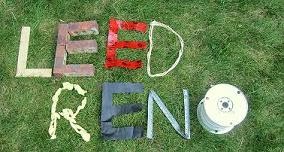If a newly constructed home is going to need to be replaced in 30 years or have major renovations done to it, the same principle applies. New building materials being produced and the old material being torn out.
Recognizing this, one of the pre-requisites for a LEED home is a durability plan. It is essentially required of the builder (or renovator) to assess risks to the long term health of the house:
- Exterior water infiltration
- Interior water leaks
- Condensation
- Pests / termites
- Natural Disasters
LEED provides a sample evaluation form with key things to look for as well as some mandatory features for minimizing water damage. Some are common sense things like not installing carpet in your bathroom others are less common like having a drain pan under any washing machine or water heater (not including those in the basement).
Being an existing home with 30 years under its belt makes this process a little less theoretical. A detailed inspection of the home allowed us to assess where we had existing problems that needed to be corrected.
Our home fared well with the exception of some exterior water problems that we will need to fix:
- The ground around our home has a flat grade rather than providing a slope away from the house
 - All our exterior window sills are brick. All are starting to degrade While brick looks pretty, it is porous and when installed in a location where water will collect on top it will start to break apart especially in freeze / thaw conditions where water runs into cracks and then freezes and expands. We will need to replace all our sills with something more durable with a positive slope away from the window.
- All our exterior window sills are brick. All are starting to degrade While brick looks pretty, it is porous and when installed in a location where water will collect on top it will start to break apart especially in freeze / thaw conditions where water runs into cracks and then freezes and expands. We will need to replace all our sills with something more durable with a positive slope away from the window.- The flashing on top of our brick wall slopes towards the house essentially dumping water down behind the bricks.... not good. Needs to be repaired and the adjacent brick replaced.
- Finally some of our siding against our roof comes right down to the shingles. This can allow water to be drawn up behind the siding due to the wicking action of water
Whether we were doing a LEED renovation or not these are issues that need to be addressed. If they aren't fixed they will lead to larger more costly (financially and environmentally) corrections later. So it is probably a good exercise for every home owner.


No comments:
Post a Comment